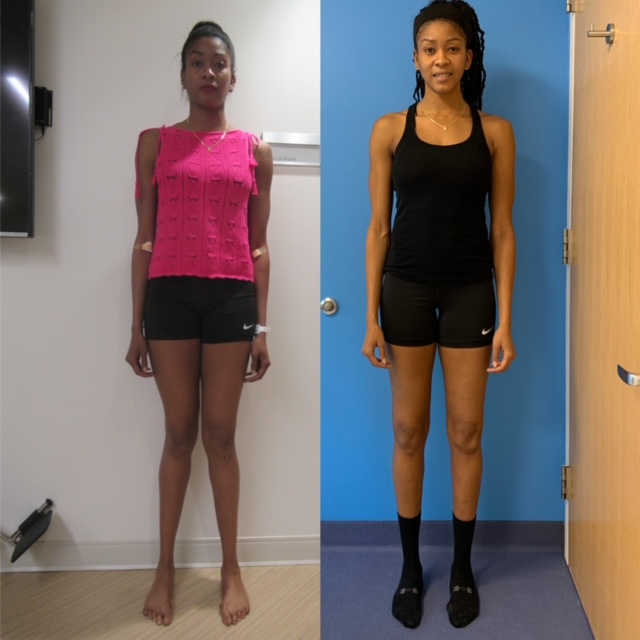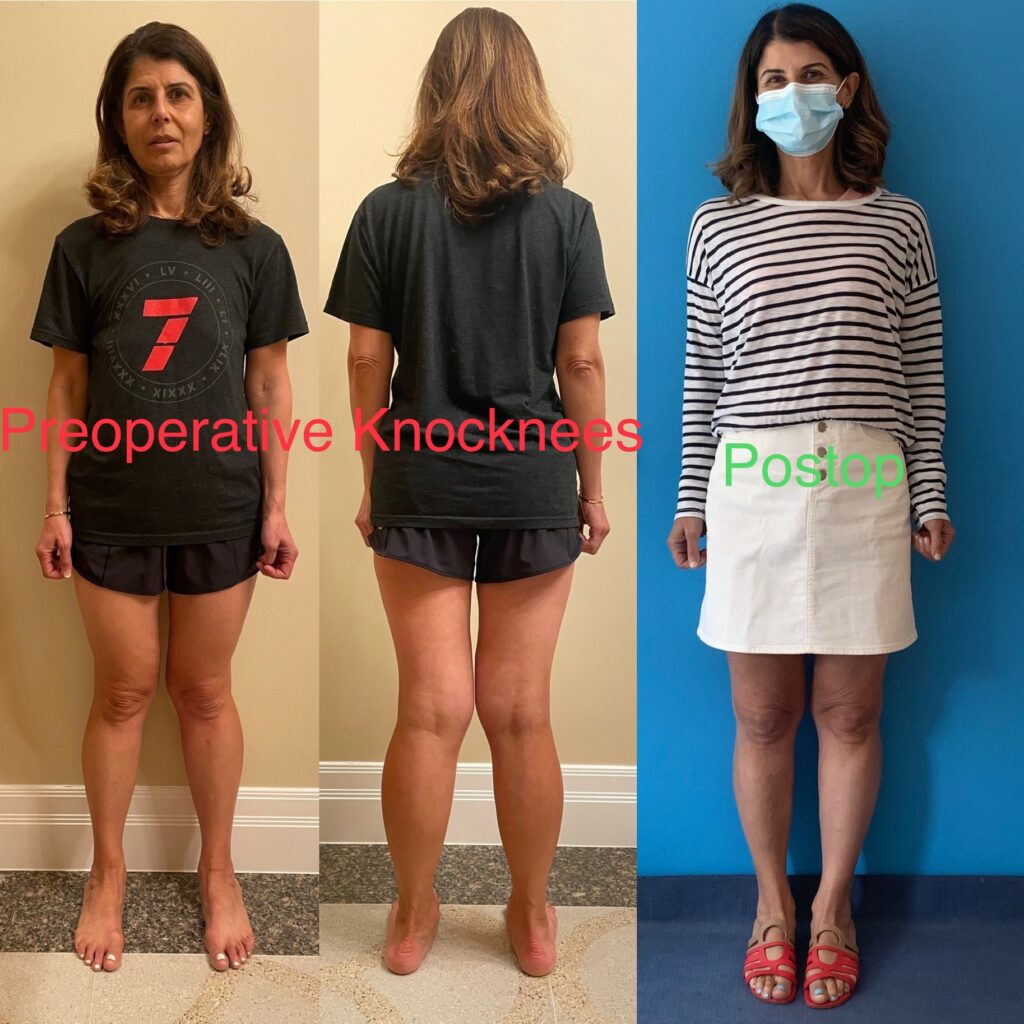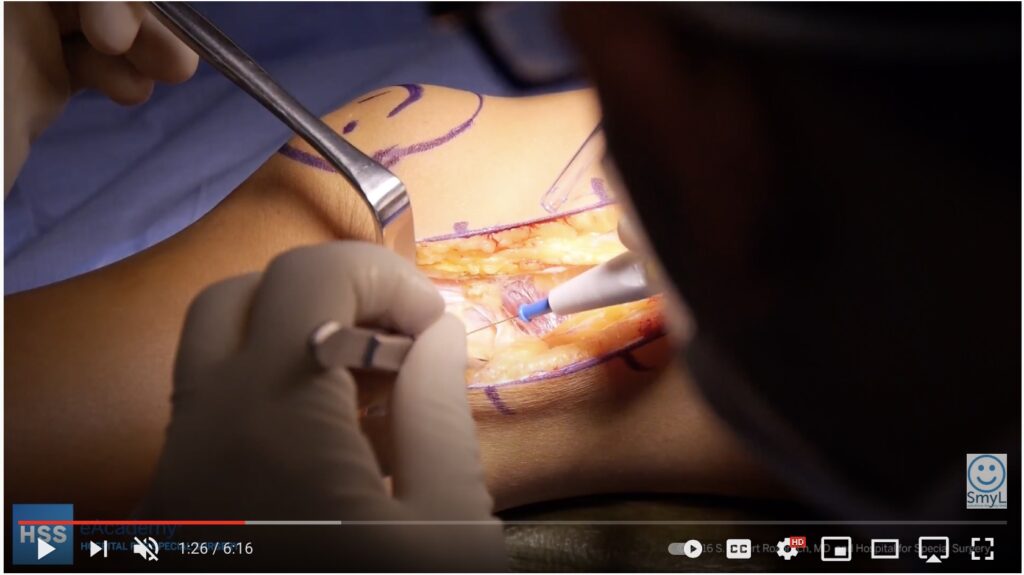Knock Knee Quick Links: Overview | What is Knock Knee | Is Knock Knee Normal | Causes of Knock Knees | Knock Knee Symptoms | Diagnosing Knock Knees | Treatment

Knock Knee Treatment Videos
Dr. Rozbruch Discusses Knock-Knee Treatment
Knock Knee Correction Overview
Aiman’s Knock Knees
Sandra’s Knock Knee Story
Overview of the Knock Knee Condition

A condition in which the knees bend inward, touching (or “knocking”) even when a person is standing with their ankles apart, knock knee can affect people of all ages. Knock knee, also known as genu valgum, is a mal-alignment of the knee with various causes, often leading to pain and degeneration of the knee if left untreated. Knock-knees can be congenital, developmental, or post-traumatic.
The common theme that pervades all age groups is that the knee is abnormally loaded which can lead to pain, increasing deformity, instability, and progressive degeneration. Correction of the deformity leads to improved knee mechanics, better walking, less pain, and prevents the rapid progression of damage to the knee.
Adult patients who have had knock-knee for many years overload the outside (lateral compartment) and stretch the inside (medial collateral ligament) leading to pain, instability, and arthritis. To prevent and delay the need for joint replacement, knee realignment should be done with osteotomy.
What Is Knock Knee?
Knock knee is a condition in which a person’s knees angle toward each other and touch (“knock”), even when the person is standing with their ankles apart. While temporarily knocked knees is a standard developmental stage in most children, this often self-corrects by age seven or eight. Knock knees that persist beyond six years of age, are severe, or affect one leg significantly more than the other may be a sign of knock knee syndrome.
Knock knee that falls outside the normal developmental patterns may be caused by disease, infection, or other conditions. In these cases, orthopedic intervention may be required to treat the knock knee condition.
Is Knock Knee Normal?
Most children experience normal angular changes in their legs as they grow. When a child is born, they are typically bowlegged until they begin walking at 12-18 months. By the time the child is two to three years old, his legs should begin to angle inward, making him knock-kneed. However, knock-knee usually self-corrects by the time a child is seven to eight years old.
If the angular profile (the leg’s angle from hip to foot) falls outside normal patterns, worsens over time, or is present on only one side of the body, it may be indicative of a more serious form of knock knee requiring further evaluation.
What Causes Knock Knee?
While knock knee is part of a child’s normal growth pattern, persistent forms of knock knee may stem from an underlying disease, infection, or injury. Some common causes of knock knee include:
- Metabolic disease
- Renal failure
- Physical trauma
- Arthritis, particularly in the knee
- Bone infection (osteomyelitis)
- Rickets (a bone-weakening disease caused by lack of vitamin D)
- Congenital
- Growth plate injury
- Benign bone tumors
- Fractures that heal with deformity (malunion)
Being overweight or obese can also put extra pressure on the knees and contribute to knock knee.

Symptoms of Knock Knee Syndrome
The most commonly observed symptom of knock knee is a separation of the ankles when the knees are together. Other symptoms of knock knee often arise as a result of the walking gait adopted by individuals with knock knee. These symptoms may include:
- Pain in knees, feet, hips, and ankles
- A limp when walking
- Stiff or sore joints
- Feet do not touch when standing with knees together
- Knee or hip pain
- Reduced range of motion in hips
- Difficulty walking or running
- Knee instability
- Progressive knee arthritis in adults
- Patients or parents may be unhappy with aesthetics
Other symptoms from underlying conditions may also be present.
How is Knock Knee Diagnosed?
Knock knee is diagnosed through a thorough review of an individual’s medical history, pre-existing conditions, family history, and current health. It also includes a physical examination of the patient’s legs and observations of their gait. Diagnosis also includes a standing alignment X-ray. A standing alignment X-ray or EOS image produces an image of the leg from hip to ankle which helps the orthopedist locate the mechanical axis of the deformity as well as its location. On the x-rays, the magnitude and location of the deformity is identified.
How Is Knock Knee Treated?

Treatment for mild cases of knock knee in children or adolescents may include braces to help bones grow in the correct position. If a gradual correction does not occur, surgery may be recommended.
In the growing child, guided growth minimal incision surgery may be used to encourage the limb to gradually grow straight. Osteotomy, in which the femur is cut, and then realigned may be needed. In some cases, the surgeon also places an external fixator. With external fixators, pins are inserted into the bone and protrude out of the body to attach to an external stabilizing structure. Physical therapy is also an important part of treatment, especially in cases where surgery has occurred.
In skeletally mature adolescents and in adults, osteotomy is the recommended treatment to straighten the leg. X-rays are used to determine the location and magnitude of the deformity. In most cases, we treat the femur, but there are situations when the tibia or both femur and tibia are treated. When moderate deformity is present, the osteotomy is typically stabilized with internal fixation (plate or rod). When the mal-alignment is more severe, gradual realignment of the limb through the osteotomy may be done with an external fixator.




